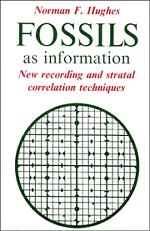Book contents
- Frontmatter
- Contents
- Preface
- Part A Problem of effectiveness
- Part B Proposed solution
- Part C Applications for information-handling
- 9 Earth and biologic evolution
- 10 Proposed new Period Classification of fossils of past organisms
- 11 Paleoenvironment investigation
- 12 General stratigraphic procedures
- 13 Limitations of the use of zones
- 14 Event-Correlation
- Part D Further considerations
- Appendices 1 and 2: Worked examples of GOR and PTR forms
- Glossary
- References
- Index
9 - Earth and biologic evolution
Published online by Cambridge University Press: 02 February 2010
- Frontmatter
- Contents
- Preface
- Part A Problem of effectiveness
- Part B Proposed solution
- Part C Applications for information-handling
- 9 Earth and biologic evolution
- 10 Proposed new Period Classification of fossils of past organisms
- 11 Paleoenvironment investigation
- 12 General stratigraphic procedures
- 13 Limitations of the use of zones
- 14 Event-Correlation
- Part D Further considerations
- Appendices 1 and 2: Worked examples of GOR and PTR forms
- Glossary
- References
- Index
Summary
Because views about biologic evolution may enter into consideration of the topics of the next five chapters, it seems preferable to explain my own attitude briefly here rather than as digressions throughout the development of other topics.
Explaining biologic evolution. Even after 130 years, reference to biologic evolution is frequently defensive and is often narrowly approached. Some biologists appear still to devote much time and even whole journals to explaining and amplifying ‘evolution’. This appears to follow from excessive contemplation of genetics which is unavoidably short-time-scale based, coupled with inadequate attention to paleontology with its long-time-scale corrective; no useful connection between these two disciplines has yet been found nor seems likely soon to appear.
Paleontologic contribution. It is difficult for a paleontologist to find significance in so much literature devoted to ‘evolution’ without, in most cases, any reference at all to fossils or to geologic history. No amount of dexterity with comparative morphology of extant organisms, even extended to cellular and biochemical matters, can successfully simulate evolutionary history. Evidence from fossils in their stratigraphic context, whatever deficiencies there may be in scope or in preservation, has to form the first main framework of study.
Earth evolution. Evolution as a general concept appears to mean ‘progressive change, with the new state consequent on the nature of the old’. It is a process which applies to the whole earth and beyond, and there is no reason to regard ‘biologic evolution’ as anything other than a small sector of the whole.
- Type
- Chapter
- Information
- Fossils as InformationNew Recording and Stratal Correlation Techniques, pp. 57 - 59Publisher: Cambridge University PressPrint publication year: 1989



